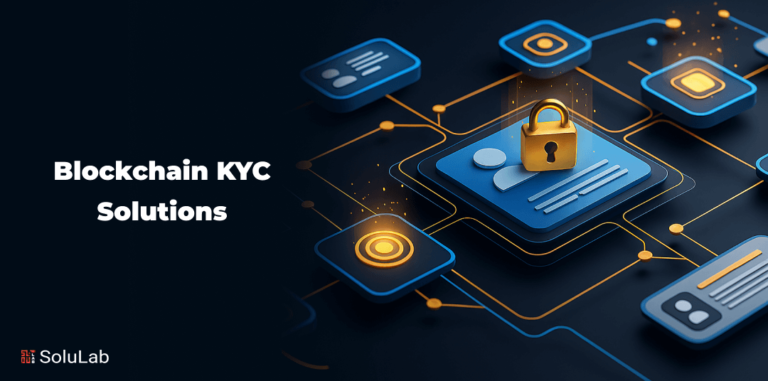Many tech-friendly people would have come across bitcoin, cryptocurrency, or blockchain. However, smart contracts are ethereum’s fundamental breakthrough and are less known. They are programmes that anybody may build and distribute on a public blockchain, allowing for a wide range of innovation. Smart contracts underpin buzzwords like NFTs, DeFi, and DAOs, which promise new methods to own anything, improved financial systems for everybody, and new ways for people to coordinate and participate, respectively.
Smart contracts are applications that run when certain conditions are met and are recorded on a blockchain. They are often used to automate the implementation of a contract so that all participants are instantly assured of the outcome, without the participation of an intermediary or the waste of time. They can also automate a workflow by initiating the next operation when certain circumstances are satisfied.
Smart contracts enable new types of transactions with distinct advantages above those offered by conventional systems. Traditionally, it takes weeks and loads of documentation for a bank, for example, to verify an individual’s assets and provide a loan. A smart contract allows a piece of code to provide a loan depending on the collateral given by the individual.
However, smart contracts may be configured to interact with one another and enable quick and verified transactions for diverse purposes. In other words, they make crypto programmes modular as if they were building blocks.
Defining Composability
The interoperability of components inside a design system is called “composability”. Composability is the compatibility of DeFi protocols, which results in efficient and innovative financial services and solutions for DeFi end-users. A more modular structure allows various pieces to interact in various ways. This feature of composability is one of the most discussed among cyber enthusiasts, but it is underappreciated in general while being one of the most powerful characteristics of crypto. Because composability enables everyone in a network to take existing programmes and adapt or build on top of them, it opens up new use cases that did not previously exist.
DeFi’s composability implies that these activities may be reordered or changed as needed. Composability paired with financial resources Legos provides almost limitless possibilities for smart contracts in financial applications, all of which employ blockchains as their foundation layer. Because Ethereum has proven itself as the finest blockchain for executing smart contracts and developing DApps, it is the primary blockchain utilized for these DeFi apps. As a result, Ethereum may be regarded as the fundamental Lego block.
What are Money Legos?
Money Legos are Node.js package managers who belong to an online repository for open-source projects that offers its users core domains, ABIs, and Solidity interfaces for the use of DeFi protocols. Money Individual growth can help the DeFi ecosystem thanks to Legos. When visitors visit a huge container of random legos, they mix the pieces in unexpected and inventive ways. Then, as individuals go into the Lego bin, they discover pre-assembled Lego combinations that can be utilized to create larger and better things, resulting in creating an entirely new Lego world. DeFi projects are created not just as stand-alone items but also as simply integrable components of new ventures.
A new DeFi app might integrate several of these special-purpose Lego-brick products and services into a much more sophisticated solution that is more powerful or tailored to specific customer requirements.
Significantly, these Legos are snapped together on the fly for each unique transaction. This provides a level of flexibility and creativity inconceivable in standard financial systems that are locked behind bank (fire)walls.
Because there are no barriers to adopting an existing concept and making it simpler to use or adapt to new use cases, composability eventually leads to greater choice and better user experiences. As more of the technology is abstracted away, the emphasis will turn to what individuals can accomplish with their money rather than the inefficiencies that characterize much of the old banking business.
Relationship of Legos with DeFi and Composability
Decentralized Finance (DeFi) is arguably the Ethereum blockchain’s most powerful and obvious application case. It redefines the existing financial system by making complex financial products available to anybody with an internet connection.
Composability manifests itself in a variety of ways in the conventional world. When you use an online payment gateway to pay for a cab or sign in to a hotel booking application using your Google login, you utilize the app’s modularity.
While such connections might be beneficial, they depend on a third party’s confidence. When you use an online payment gateway to make a payment, it functions as a middleman, and Google can save data from when you checked into the hotel booking application through Google’s network.
DeFi, on the other hand, develops a trustless system in which every transaction and activity can be validated on the blockchain. No one party has authority, and Ethereum serves as a neutral settlement layer. Because DeFi is permissionless, anybody may build on it, expanding the number of viable activities and interoperability between them. The network gains in power as it expands.
DeFi’s smart contracts are immutable; they cannot be switched off or shut down like any other banking account. DeFi is sometimes referred to as “open finance” since it expands our understanding of the value and “Money Legos” – a clear connection to their expandability and modularity.
A DeFi app, “Lego brick” represents a distinct financial product or service that can be dynamically integrated with others. This potential is substantially expanded by its modularity.
Risks of Composability
Despite being recognized as a crucial foundation of DeFi, there are various hazards to the ecosystem’s composability. There is a protocol risk with every blockchain, such as Ethereum; if the core chain is attacked, any application created on the network is in danger.
Smart contract concerns exist in DeFi as well. Any vulnerability in a contract code can devastate a protocol and severely harm other integrated apps. Attackers have used flaws to drain cash from protocols, frequently using flash loans to maximize profits. This might result in significant losses for users.
Furthermore, there is a danger in integrating smart contracts. Contracts for one application may be secure until they are coupled with contracts for another application.
The user may cause another significant risk. Because of the intricacies of DeFi, the danger can be exacerbated when a user takes advantage of the network’s composability to communicate with numerous protocols.
Conclusion
Several hazards are associated with DeFi, and a more configurable Ethereum is critical to the ecosystem’s health. As additional networks create their financial apps, DeFi may see greater cross-chain composability in the future. In any case, Ethereum’s decentralized banking area is unlikely to evaporate very soon. Breakthroughs like these are now a reality because of DeFi’s modularity.




